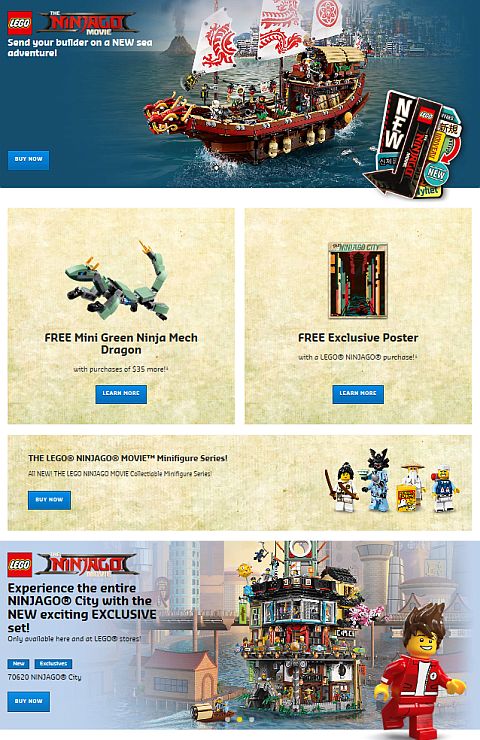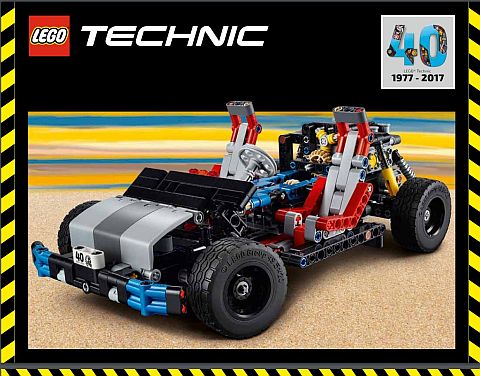This past weekend, I finally had the chance to go and watch The LEGO Ninjago Movie. I was very excited for this film, as I have been following the LEGO Ninjago story from all the way back in 2011, when the first TV show episodes and first LEGO sets came out. Even though The LEGO Ninjago Movie is not a continuation of the TV show, still, the characters and settings are pretty much the same, or at least similar. So yeah, I was very much looking forward to watching it. 🙂

At the same time, I was also getting concerned, as reviews of The LEGO Ninjago Movie were quite mixed, and it only has 51% approval rating on the review aggregator website Rotten Tomatoes. The site’s critical consensus reads, “Despite ample charm and a few solid gags, The LEGO Ninjago Movie suggests this franchise’s formula isn’t clicking like it used to.” The film also earned far less than what was initially expected after the success of The LEGO Movie and The LEGO Batman Movie, indicating that the same kind of interest just isn’t there. However, I was somewhat reassured by William’s previous review (see: The LEGO Ninjago Movie Review & Thoughts), indicating that it was still a film worth watching. SPOILER ALERT: The trailers and clips in the video below are spoily, so please don’t watch them if you haven’t seen the movie yet but plan to.
After seeing the film, I would say that I agree with the ratings. There are some highlights, but in general, it is a very uneven production in almost every aspect. For example, while most of the visuals are quite beautiful, the large fight-scenes between mechs are a complete mess. Same thing with the characters; most of them are not developed enough for the audience to care about, while others are overdeveloped with dialogues that are way too long, to the point of being cringy and boring. And the music? I don’t even remember the music and songs, which is especially saddening because one of the major highlights of the LEGO Ninjago TV show is its hauntingly beautiful background scores and catchy theme song.

One thing, however, that really stood out for me on the positive side, is how well The LEGO Ninjago Movie sets matched the scenes, settings, vehicles, and characters from the film. The film producers and LEGO designers obviously worked together very closely. The mechs, in particular are spot on, besides the obvious differences in size. This includes the #70611 LEGO Ninjago Movie Water Strider, the #70612 LEGO Ninjago Movie Green Ninja Mech Dragon, the #70613 LEGO Ninjago Movie Garma Mecha Man, the #70614 LEGO Ninjago Movie Lightning Jet, the #70615 LEGO Ninjago Movie Fire Mech, and the #70616 LEGO Ninjago Movie Ice Tank (the #70632 LEGO Ninjago Cole’s Quake Mech will be released later).

The #70618 LEGO Ninjago Movie Destiny’s Bounty is also very true to the version in the film, and one of the most beautiful ships LEGO ever released. And, the #70620 LEGO Ninjago Movie Ninjago City set is a great amalgamation of several locations in Ninjago City, and represents the chaotic nature and long history of the city very well. I was a bit surprised though that the #70617 LEGO Ninjago Temple of The Ultimate Ultimate Weapon is actually called The Temple of Fragile Foundation in the film. I don’t know why the same name was not used for the set, as it sounds really good.

Another set that will be released later in the second wave, is the #70631 LEGO Ninjago Movie Garmadon’s Volcano Lair (see above). Based on all the activities that went on at this location in the film, I expect this to be a very fun set. It is also worth noting that both the #70632 LEGO Ninjago Movie Cole’s Quake Mech and the #70629 LEGO Ninjago Movie Piranha Chase (the third set that will be released in the second wave) include the warrior version of Lloyd’s mom Misako (nicknamed Koko), also known as Lady Iron Dragon. I was very happy to see her in minifig form, as she is my most favorite character from the film.


The LEGO Ninjago Movie actually does have just as much subtle humor and interesting pop culture references as the previous two films, however because the Ninjago audience is still quite young, and older fans don’t really care for watching anything Ninjago-related to begin with, it went over the head of most people in the audience. Even if you are not planning to watch the film, I do recommend taking a look at the list of Easter eggs highlighted in the video below. I think you will be pleasantly surprised…
The day after watching the film, I was discussing it with others who have seen it, and we all had a hard time remembering how the story actually ended. We all kind of zoned out at that super awkward and long dialogue Lloyd had with the cat and his dad. That’s not a good sign for any movie… but, even if The LEGO Ninjago Movie didn’t do as well, and is not as memorable as the previous two films, we got an excellent selection of really solid sets that are a pleasure to build and play with. And that’s something to be very happy about. I only wish LEGO would also release that rickety old school bus from the film!

What do you think? Have you seen The LEGO Ninjago Movie yet? Did you like it? What were your favorite parts? And what do you think of the LEGO sets compared to the film? Feel free to share your thoughts and own review in the comment section below! 😉
And you might also like to check out the following related posts:
- The LEGO Ninjago Movie Review & Thoughts
- The LEGO Ninjago Movie Mechs Review
- LEGO Ninjago City Review & Modular Buildings
- The LEGO Ninjago Movie Merchandise & More!
- LEGO Ninjago Movie Sets Review – Part 1 (#70606, #70607, #70708)
- LEGO Ninjago Movie Sets Review – Part 2 (#70609, #70610, #10739)
- LEGO Ninjago Movie Sets Review – Part 3 (#70617)















